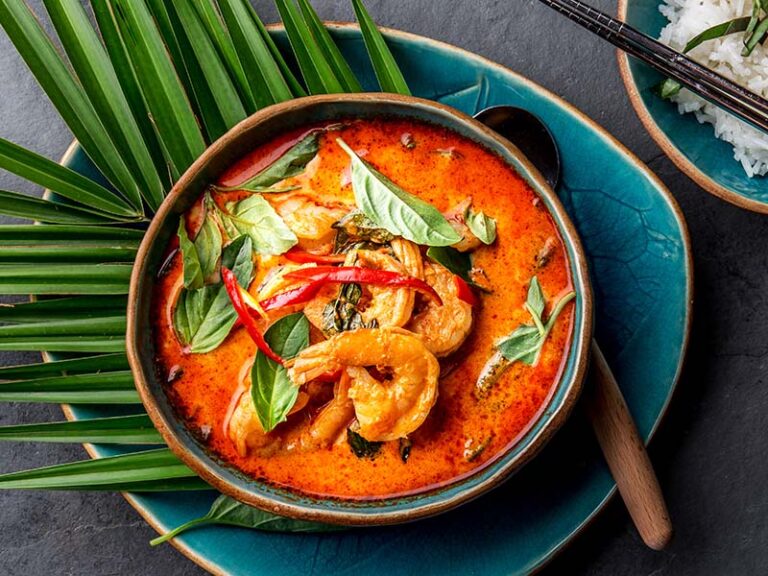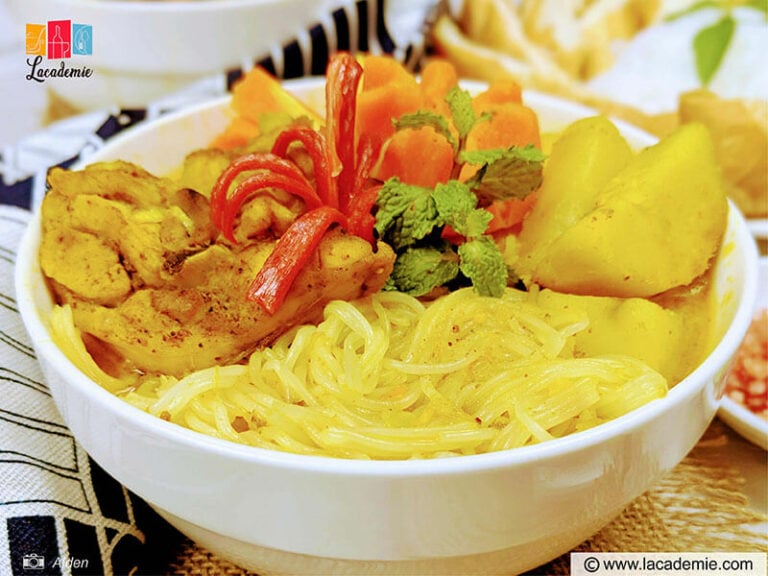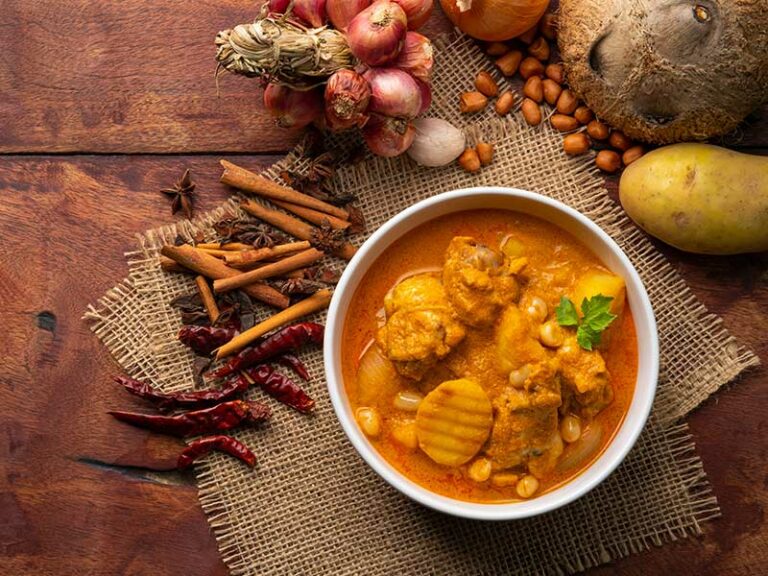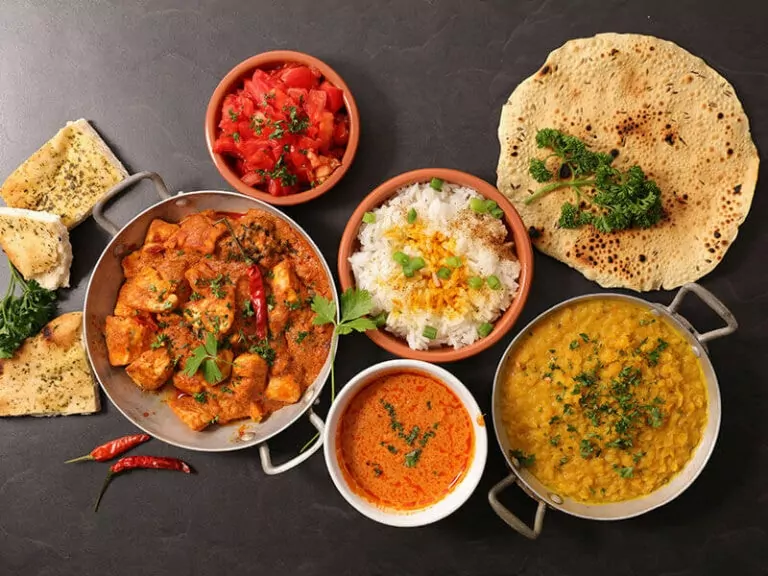What is curry? If you ask a group of friends about this, their opinions will likely be divided. Some say it’s a dish, while others argue it’s a spice, and the rest are in the dark about the topic. If you have no idea how to answer those questions, this article will help you out.
Let’s find out what the popular term “curry” is and why it makes many people confused. You can also learn tips and tricks about cooking and storing your curry along the way. Without further ado, let’s dive right in!
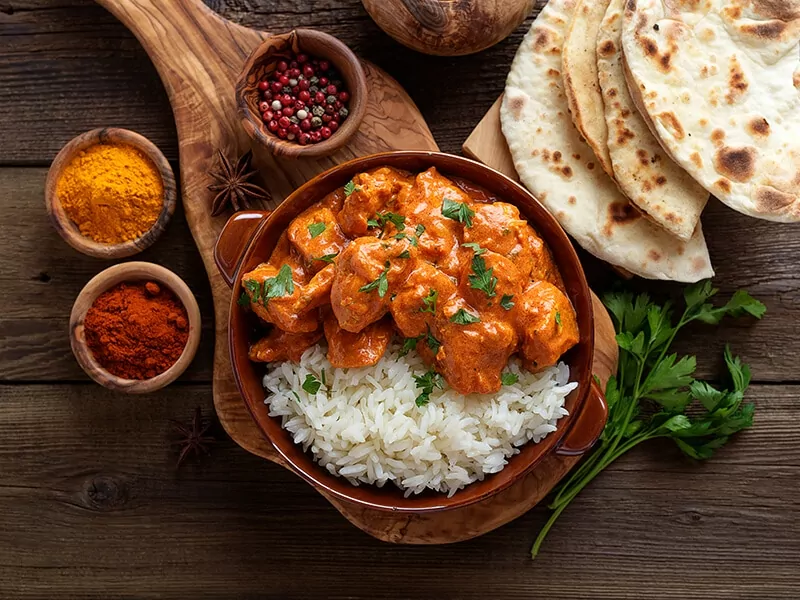
What Is Curry?
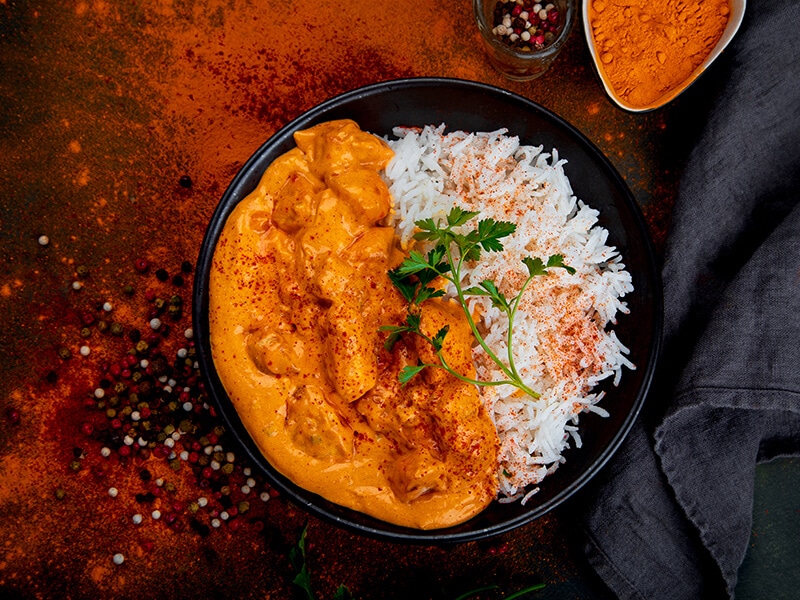
So, what is curry, and where did it come from?
A curry is a sauce-based dish made from meat, vegetables, and hot spices (coriander, turmeric, red chilies, etc.). This kind of dish originated in the subcontinent of India and is thought to exist in 2500 BC.
The term “curry” was derived from the Tamil word “kari” (sauce) by the British to refer to many Indian sauce-based dishes as a whole during their colonization. However, these sauces and stews do have their proper names in India, and there is no such “curry” in the first place.
However, the term became widely popular after being introduced to the rest of the world. And now, it’s often used to regard various cuisines cooked with gravy spices that mostly originated from Southern Asia.
Curry is a broad term that can refer to both dishes and spices. It can either appear on your menus as food or as an ingredient in your recipes. As a result, many people may get confused about this, so let’s go in-depth into its other uses.
What Is Curry Powder?
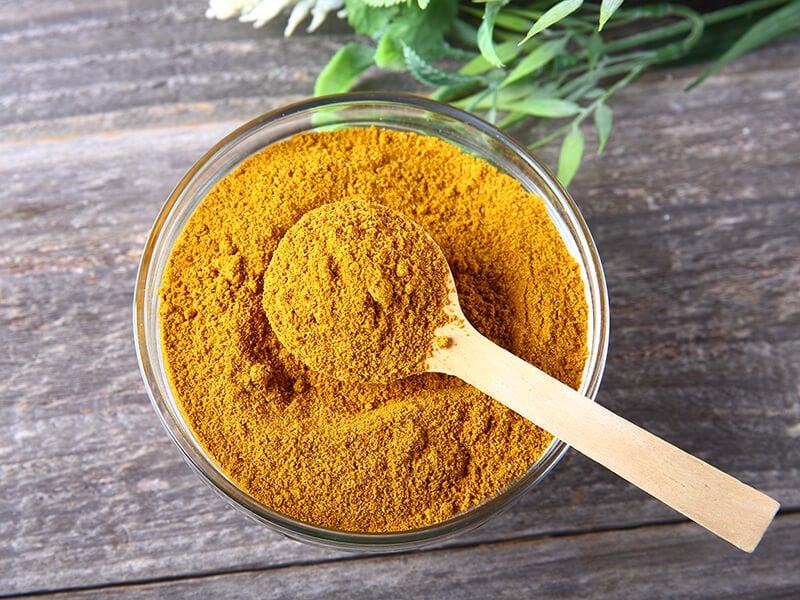
Curry powder is a British invention inspired by the flavor of Indian sauces. It’s a dry combination of various spices to use in curry-based dishes. While there are no strict rules for standard ingredients in this powder, it’s primarily made with turmeric, cumin, and coriander.
Turmeric, the key ingredient, is the reason behind the distinctive yellow color of curry powder. Other common ingredients are red or black pepper, ginger, garlic, mustard, bay leaves, clove, etc.
Each culture has its own ingredients and flavors. This means there are numerous variations of curry powder around the world. However, it often comes with a warm and earthy aroma that is vital to curry dishes. Besides, the combination of spices gives it sweet and savory flavors.
Although curry powder is supposed to be meant for curry, Indian people rarely use it in their authentic dishes (1). Instead, they use a wide range of spices for each recipe. However, curry powder can add flavors to other dishes, such as sauces, stews, soups, meat, etc.
Find out how curry became an important part of British cuisine.
What Is Curry Paste?
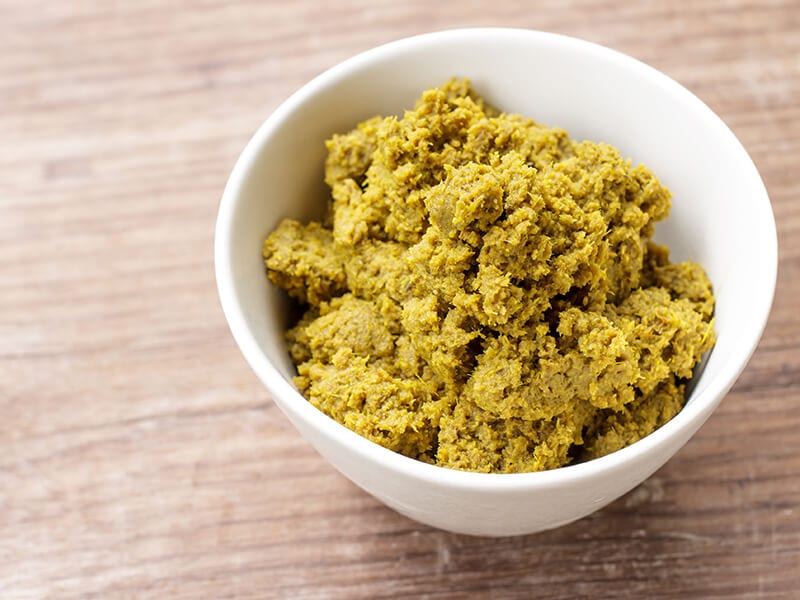
Curry paste is a wet mixture of different spices. The ingredients often include chilies, garlic, galangal, coriander, etc. Depending on the type of chili in the ingredients, curry paste often varies in color (red, yellow, or green) and spicy levels.
Like curry powder, this paste is commonly used in curry dishes, such as Thai-style and Indian-style curries. However, the spicy flavor of curry paste is more suitable for the former, whereas curry powder is ideal for the latter due to its sweetness and savory taste.
Curry paste has other uses apart from preparing curries. For example, it can be used for marinating food like vegetables, chicken, beef, and seafood. It also works well with several dishes, such as soups and salads.
Find out how to make red curry paste to prepare your curry dishes.
What Are Curry Leaves?
Curry leaves are a kind of herb from the curry tree in South India. Unlike curry powder and paste, curry leaves are made not by mixing spices but by using fresh leaves. They come in shiny, dark green, and teardrop-shaped, similar to Neem tree leaves.
Curry leaves have a bitter, sweet flavor and a distinctly bright, citrusy aroma. This ingredient is the most common in South and Southeast Asian dishes. However, they are not necessary for curry cooking and are often treated as optional.
Curry leaves are a rich source of nutrients. This herb can help lower cholesterol and triglyceride levels, which helps protect your heart health. Additionally, curry leaves may help fight cancer and Alzheimer’s disease (2).
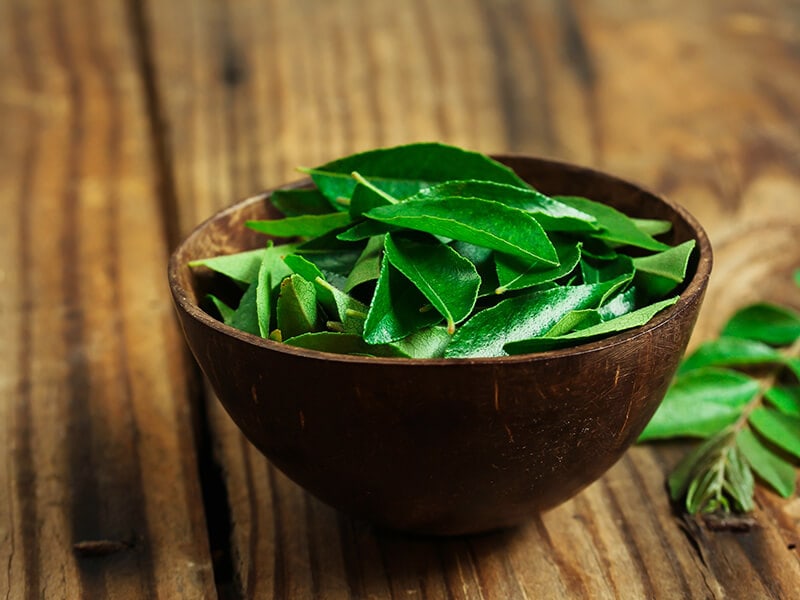
Major Types Of Curry
While there are numerous variations in the curry world, Thai, Indian, and Japanese curries are the most common. So, let’s dig deeper into these types. For a summary of these curries, look at the table below.
Thai Curries
Thai curries refer to Thai-style curry dishes and curry paste. They are often made from hot chilies, ginger, garlic, cumin, turmeric, coriander seeds, etc. These curries are commonly used in rice and round rice noodles. They also work well with meat, chicken, beef, and vegetables.
Based on the type of chilies in the ingredients, Thai curries are divided into 3 kinds: green, yellow, and red curries.
Green Curry
Green curry (also known as kreung gaeng keo wahn) is the most common version of Thai cooking. Green chilies, along with other herbs, such as coriander seeds, makrut lime leaves, peel, and basil, give this curry a bright green color.
This curry often comes with creamy, sweet, and salty flavors. And when it comes to spicy levels, green curry is the hottest among Thai curries. If you can’t stand the spicy flavor, you may want to skip this curry in your recipes.
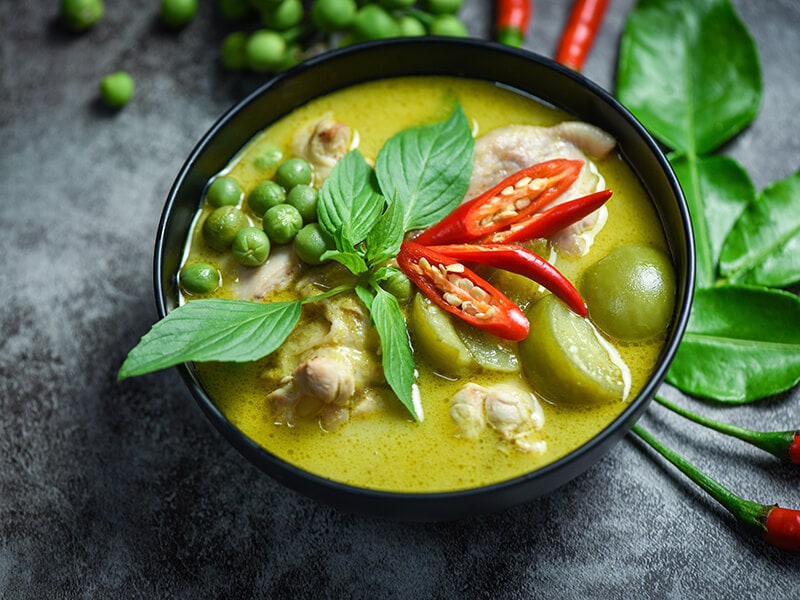
Yellow Curry
Yellow curry has milder and sweet tinged with spicy flavors. In the family of Thai curries, this is the least spicy because it contains fewer chilies than others. The golden yellow of this curry comes from the yellow chilies and mostly from turmeric.
Aside from the two ingredients mentioned above, yellow curry also includes a variety of other spices. Some common ingredients are coriander seed, cumin, ginger, galangal, lemongrass, and shallots.
Many people often mistake this curry for Indian curry because of its similar color. The confusion is understandable because both curries got their color from turmeric. However, their flavor and consistency are distinctively different. Of the two, yellow curry is often spicier and thinner.
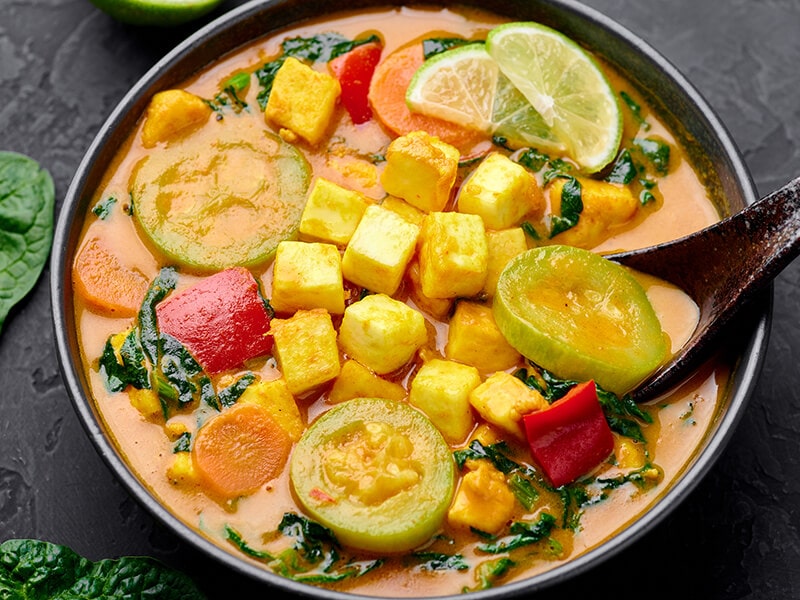
Red Curry
Red curry often includes red chilies along with other common ingredients, like ginger, garlic, galangal, tomatoes, etc. Instead of using fresh chilies as green curry, it’s typically made from dried chilies. As a result, this creates a spicy level between green curry and yellow curry.
The red chilies create a red color and bold and spicy flavors for the curry. Red curry is the most versatile of the three types. In some cases, people will reduce the number of chilies but increase chili powder or tomato sauce to enhance the color and flavor.
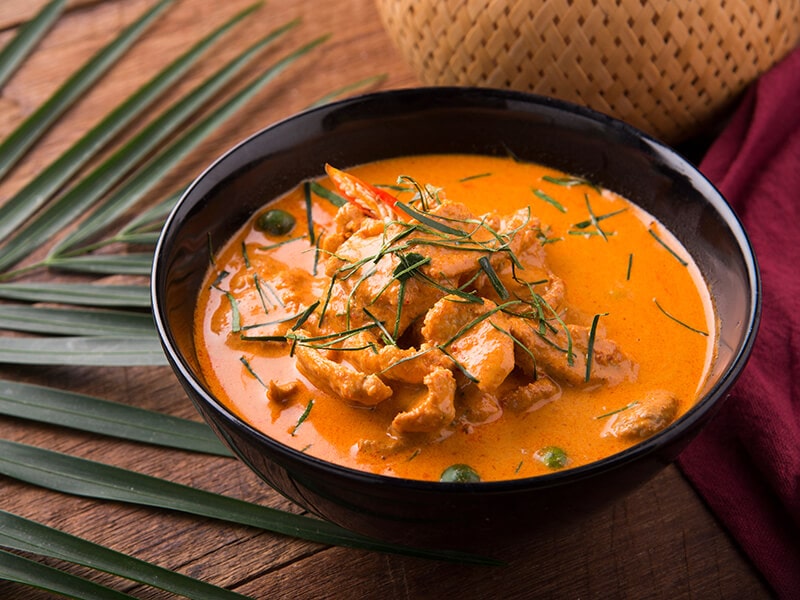
Indian Curries
Typical Indian curries often include various spices, such as turmeric, cumin, coriander, ginger, garlic, onion, and chili powder. Other ingredients, like coconut milk, yogurt, lentils, and ghee, can also be added to make the curries thickener.
While Indian and Thai curries share some common ingredients, they have an incredibly distinctive taste. Indian curries are less spicy but more intense than their Thai counterparts. The former is also thicker and more stew-like.
Indian curries can be served with numerous dishes. For example, flatbread, rice, dhal, potatoes, samosas, and vegetables are all good choices to eat with them. Regarding beverage accompaniments, these dishes taste best with lassi, fruit juices, beer, and wine.
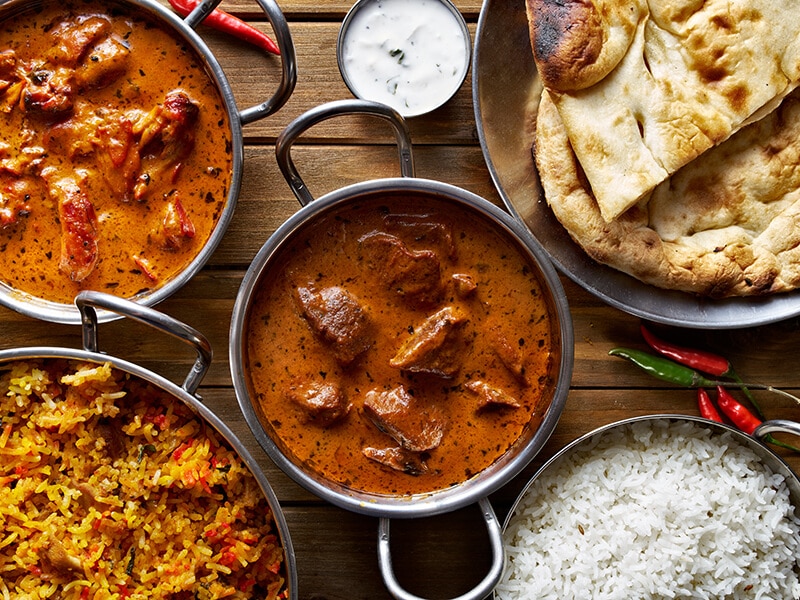
Japanese Curries
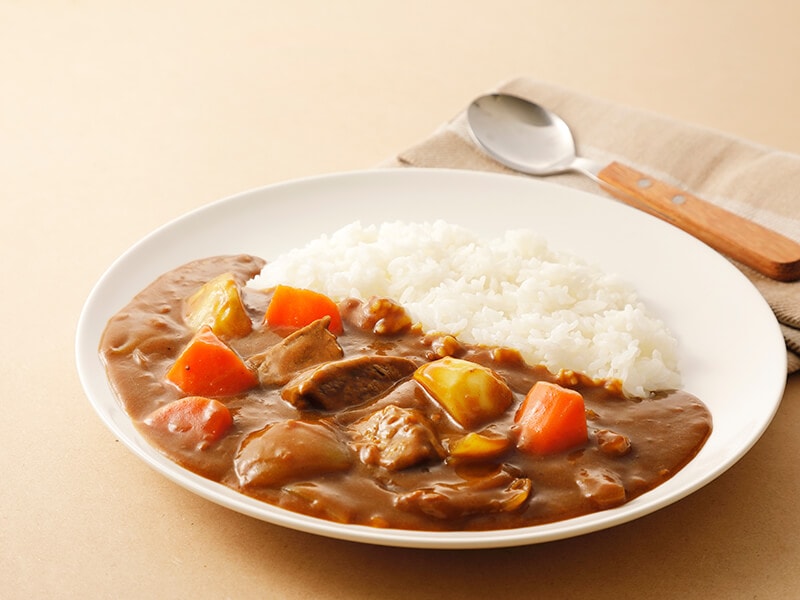
The earliest record of curry in Japan dates back to the Meiji era (1868-1912). During this period, the British introduced curry to the Japanese Imperial Navy to prevent Beriberi, a disease caused by a lack of Vitamin B1.
After some time, Japanese people adopted the curry recipe and created their own curry dishes. Japanese curries are often made from curry powder or roux. Other ingredients include a wide range of vegetables and meat.
Common veggies are onions, carrots, and potatoes, while pork, beef, and chicken are traditional meat choices. Some popular Japanese curry dishes are chicken Katsu curry and curry rice. They are commonly served with noodles, bread, salad, etc.
Although Japanese curries vary from region to region, they’re often thicker in texture and less spicy than Thai and Indian curries. Additionally, Japanese recipes often use sweet spices, which makes the dish sweeter.
Acquire skills in making Japanese curry powder from beginning to end.
How To Make Curry Powder
Here are the basic steps to help you make a flavorful curry powder. After that, you can use it in your curry recipes or flavoring your food.
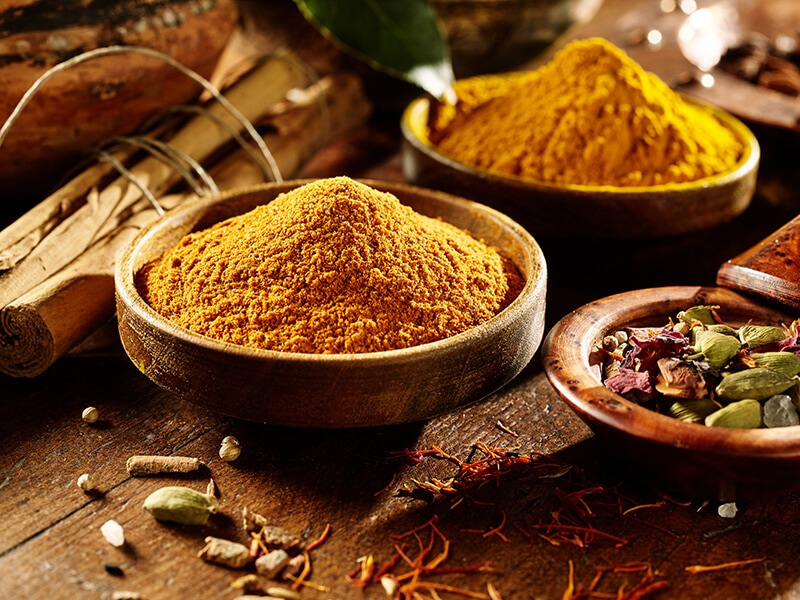
Step 1
Prepare the following ingredients before cooking.
- 1 tablespoon of ground turmeric
- 1 tablespoon of ground cumin seeds
- 1 tablespoon of ground coriander seeds
- ½ teaspoonof ground nutmeg
- ½ teaspoon of ground ginger
- ½ teaspoonof ground mustard seeds
- ½ teaspoonof ground black peppercorns
- ½ teaspoonof cayenne pepper
- ½ teaspoonof paprika
Make sure you get all essential ingredients in the right ratio.
Step 2
Put ground turmeric, coriander seeds, and cumin seeds into a small bowl or jar with the recommended ratio. Use a whisk or fork to mix them thoroughly.
Step 3
Add the rest of the ingredients, including ground nutmeg, ground ginger, ground mustard seeds, ground black peppercorns, cayenne pepper, and paprika, to the mixture. Mix them well.
Step 4
Use the curry powder right away for your curry dishes, soups, stews, sauces, or flavoring your meat, fish, and vegetables. Otherwise, keep it in an air-tight container and out of direct sunlight. This can help your homemade curry powder last up to 1-3 months.
Additional Tips For Perfecting Curry Powder
If you want your curry powder to be even better, here are some useful tips:
- Experiment with different ingredients and ratios. You can add or remove ingredients in your curry powder based on your preference. Some additional ingredients you can try are cinnamon, fennel seed, nutmeg, clove, asafoetida, etc.
- Ensure your mixture includes some core ingredients, such as turmeric, cumin, coriander, etc. They help bring about the flavors of curry powder.
- Use a spice grinder instead of a bowl. This is a great way to blend your ingredients thoroughly, enhancing the flavor of your curry powder.
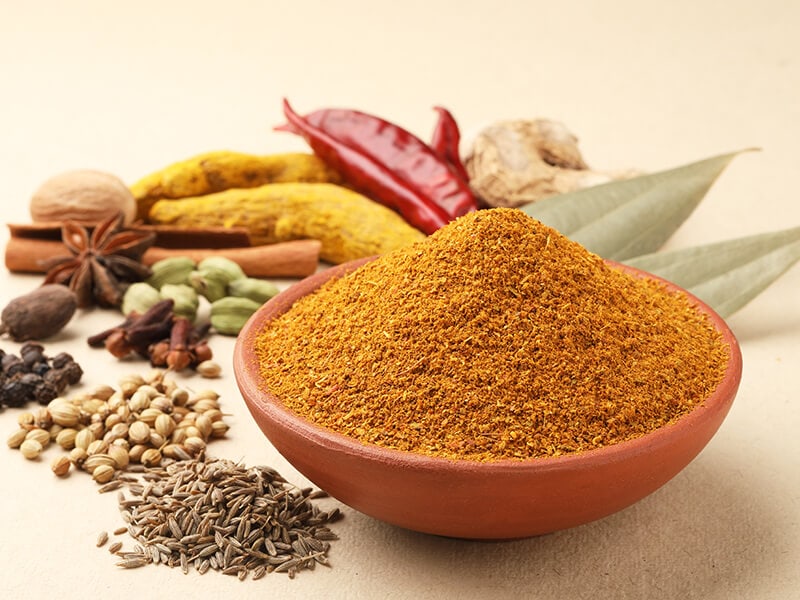
How To Store Curry
It takes time and effort to cook a delicious curry. Therefore, you should know how long your curry can last and how to store it properly.
How Long Curries Last
Normally, a curry can last about 1-2 days if it’s left to cool down and covered properly. If you store your curry in a fridge, it can be good for up to 3 days (3). The best way to keep your curry edible longer is to freeze it. A frozen curry is likely to last for up to 3 months.
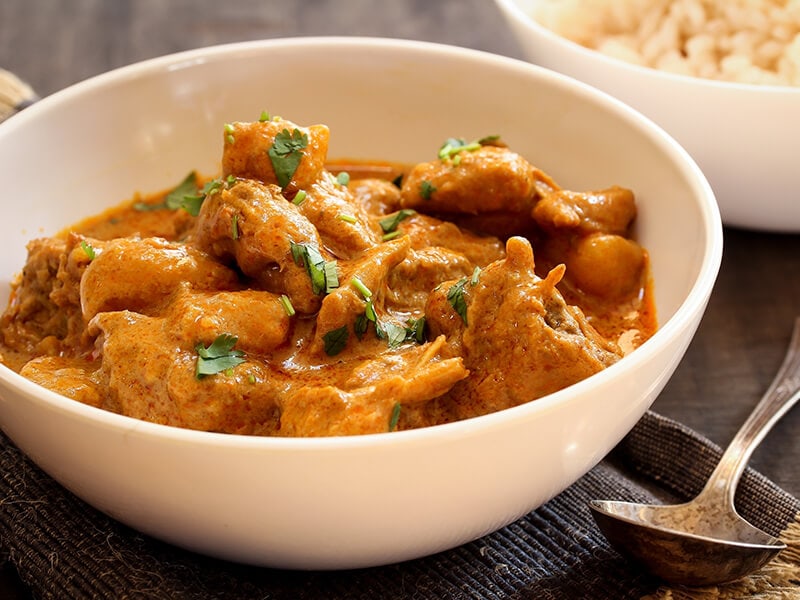
Tips To Store Curry
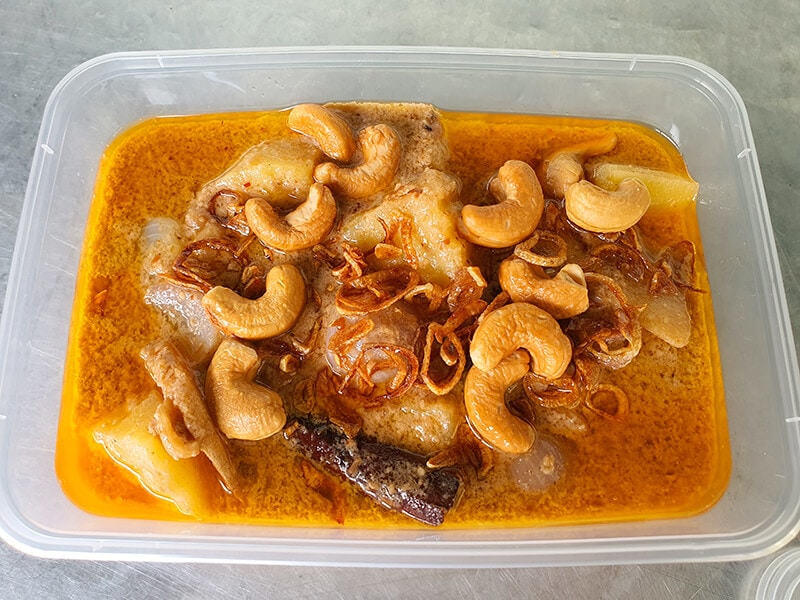
Here are some useful tips that can help you store your curry properly:
- Add ghee or remove garnish like cilantro from your curry to extend its shelf life.
- Consume your curry with fresh garnish within 2 days. Otherwise, you may want to store it in a fridge or freezer.
- Put your food in a zip bag or container and seal it tightly in a fridge or freezer. This helps prevent moisture from impacting your curry texture and flavor.
- Divide your curry into smaller servings and keep them in separate bags or containers. It’s more convenient, easier, and less time-consuming to reheat your dish.
- Ensure there is no moisture left in your zip bags or containers.
- Label your zip bags or containers with the cooking date of your curry. This will make it more convenient to track how long your dish has been stored in a fridge or freezer.
- Keep your leftover curry in the back or bottom of a fridge or freezer where the temperature is the coldest.
Learn how to freeze and defrost your leftover curry with this detailed instruction.
The Best Curry Recipes To Try At Home!
Here are some of the best recipes for curry dishes you should check out. Most of them are easy and quick to make.
Thai Yellow Chicken Curry
If you want to try making your very first Thai curry, you should give this recipe a go. Aside from the typical ingredients of yellow curry, you should also prepare thigh filets, nut butter, baby spinach, fish sauce, etc. This curry tastes best when served with steamed rice or cucumber salads.
Chickpea And Spinach Curry
While curries are often considered time-consuming dishes, this vegan, gluten-free recipe is bound to surprise you. With tomatoes, chickpeas, spinach, and other easy-to-find ingredients, you can whip up a delicious bowl of curry for only 12 minutes. Give it a try!
Butter Chicken (Murgh Makhani)
This curry requires some time and quite a few ingredients, but the result is surely worth it. As the name suggests, butter and chicken play a major role in the taste.
Yogurt and cream help reduce the heat of your curry. But if that’s not enough for you, then use mild chili powder instead of hot chili powder to make it even less spicy.
FAQs
These are other questions related to curry that might leave you wondering. So, stay tuned and give them a look!
Make Your Curry!
At this time, you probably have got your answer and also learned a few useful tips and tricks about making and storing curry. How about creating your own curry powder and using it in your flavorful and tasty curry? As I mentioned, there are no hard and fast rules for the right curry.
Feel free to experiment with your ideas; I bet the outcome may blow you away. Leave your comments to let me know which is your favorite curry and why. I would love to hear more about it. And don’t forget to share the post to spread your love for curries to other people.
References
- Rice, C.by W. and columnist, S.U.N.D.A.Y.food and wine (2021) Let the truth be known: There`s no `curry` in India, Chicago Tribune.
- Kubala, J. (2020) 9 Curry Leaf Benefits and uses, Healthline. Healthline Media.
- How long should homemade leftovers be stored? (2017) NDTV Food.

